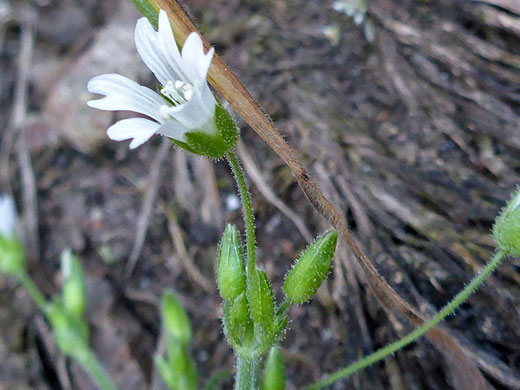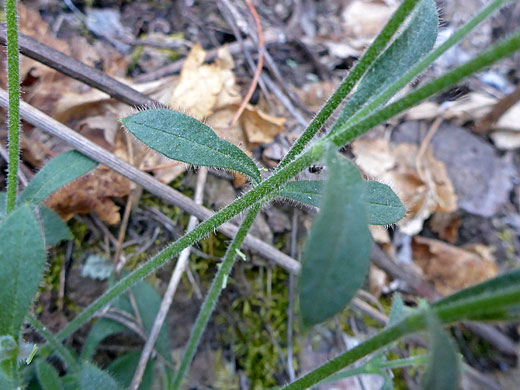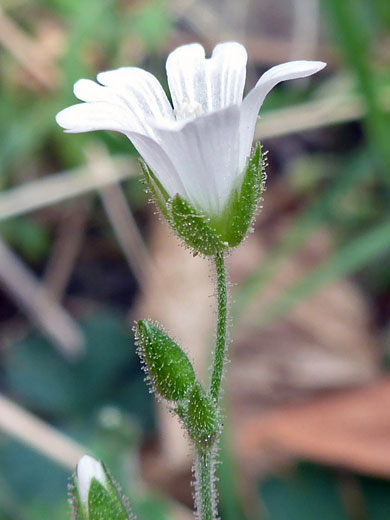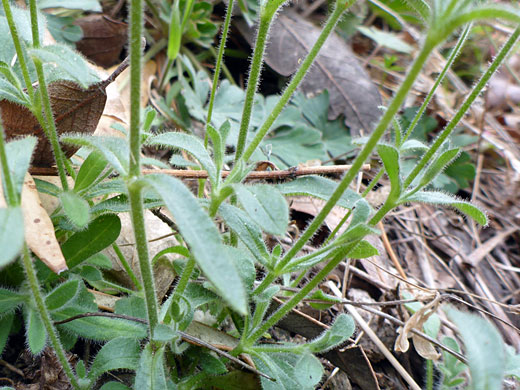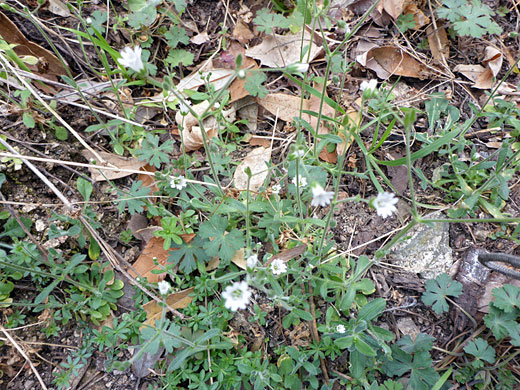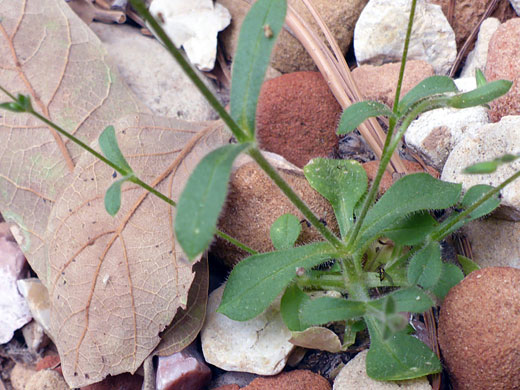
Glandular stems and calyces - cerastium texanum along the Sugarloaf Mountain Trail, Chiricahua National Monument, Arizona
Common names:
Texas chickweed, Chihuahuan mouse-ear chickweed
Family:
Scientific name:
Cerastium texanum
Main flower color:
Range:
Arizona and parts of south New Mexico
Height:
Between 6 and 14 inches
Habitat:
Washes, canyons, oak and pine woodland; generally shady, moist locations, 4,000 to 9,000 feet
Leaves:
Spatulate, oblanceolate or narrowly lanceolate, hairy, up to 2 inches long
Season:
March to June
Despite its species name, cerastium texanum does not occur in Texas, instead found in scattered areas of New Mexico and Arizona. The slender stems are erect, branching a few times from near the base; they and the leaves have a covering of quite long, soft, glandular hairs, of varying lengths. Lower stem leaves have short stalks; those higher up are stalkless. Leaf tips may be obtuse or pointed, sometimes ending in a small spike. The inflorescence is an open, terminal cluster, usually containing between two and nine flowers. At the base are a group of short, lance-shaped bracts.
Individual flowers are held on pedicels a little less than one inch long. Flowers consist of five green, hairy sepals (becoming brownish during fruiting), and five white petals, deeply notched at the tip. The petals are about twice the length as the sepals. Five white stamens and five white styles occupy the center of the flower.
Individual flowers are held on pedicels a little less than one inch long. Flowers consist of five green, hairy sepals (becoming brownish during fruiting), and five white petals, deeply notched at the tip. The petals are about twice the length as the sepals. Five white stamens and five white styles occupy the center of the flower.
All Contents © Copyright The American Southwest | Comments and Questions | Contribute | Site Map

